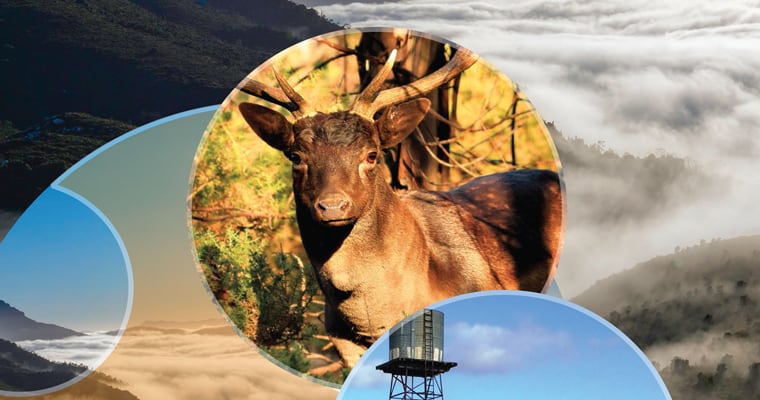
The authors of a landmark report with recommendations to future-proof Australia against dangerous new environmental invaders are among the recipients of this year’s national Froggatt Awards.
“Former National Farmers’ Federation head Dr Wendy Craik, David Palmer and Dr Richard Sheldrake have been awarded a Froggatt Award for their far-sighted analysis of the changes needed to better protect the environment from dangerous new invasive species,” Invasive Species Council CEO Andrew Cox said.
“Their ground-breaking work has set the scene for Australia to become a world leader in environmental biosecurity. Now we need Canberra and the states and territories to act,” Mr Cox said.
The three award winners formed an independent panel reviewing Australia’s biosecurity system – the national system that protects the environment, economy and public health from the negative impacts of pests, diseases and weeds.
Their report – Priorities for Australia’s Biosecurity System – found that with growing trade and travel leading to increased biosecurity risks, the system protecting Australia, particularly the natural environment, from new invasive species needs strengthening.
It calls for the establishment of a biosecurity fighting fund sourced through a small levy on sea and air cargo as well as a national priority list of major looming invasive threats to Australia’s environment and a stronger focus on the environmental and social risks posed by dangerous new invasive species.
“This profound report has put environmental biosecurity in Australia at a crossroads,” Mr Cox said.
“Dangerous new pests and diseases all too regularly enter our country, putting at risk our natural environment, agriculture and, in some cases, public health and safety.
“In Queensland we’re battling to eradicate red fire ants, the native plant killing disease myrtle rust has entrenched itself along the entire eastern seaboard, and in the far north yellow crazy ants threaten our Wet Tropics rainforests.
“Wendy, David and Richard have shown commendable foresight. We now need to follow through with action that protects Australia from dangerous new invasive species.”
This award also acknowledges the role played by the review secretariat, headed by Barbara Jones.
Dr Craik has more than 25 years experience in senior roles in public policy including Commissioner at the Productivity Commission, Chief Executive of the Murray-Darling Basin Commission (MDBC), President of the National Competition Council (NCC), Chair of the Australian Fisheries Management Authority (AFMA), Executive Director of National Farmers Federation (NFF) and Executive Officer of the Great Barrier Reef Marine Park Authority (GBRMPA).
About the Froggatt Awards
Invasive species have become one of the largest threats facing Australia’s natural environment, but their continued arrival and spread is all too often neglected as a conservation issue.
The Froggatt Awards are given to those who have made a major contribution to protecting Australia’s native plants and animals, ecosystems and people from dangerous new invasive species.
The Froggatt Awards are named in honour of Australian entomologist Walter Froggatt, a lone voice in the 1930s warning of the dangers of releasing the cane toad into Australia to control beetle infestations in sugar cane.
Tasmanian author Nicole Gill also won a Froggatt Award for her children’s book that turns the frightening world of dangerous invasive species into a mesmerising series of inspiring stories about animals operating on the frontline of biosecurity in Australia.
For comment
- Invasive Species Council: CEO Andrew Cox – 0438 588 040.









